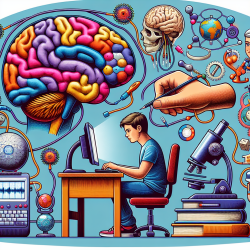Introduction
Attention-deficit/hyperactivity disorder (ADHD) is a complex neurodevelopmental disorder that affects both children and adults. Recent research has focused on understanding the neural mechanisms underlying ADHD, particularly the role of functional connectivity during cognitive tasks. The study titled "Atypical functional connectivity in adolescents and adults with persistent and remitted ADHD during a cognitive control task" offers valuable insights into these mechanisms, which can be instrumental for practitioners working with individuals with ADHD.
Understanding Functional Connectivity in ADHD
The study investigates the differences in brain functional connectivity during a cognitive control task among adolescents and adults with persistent and remitted ADHD compared to neurotypical controls. Using high-density EEG, the researchers examined connectivity patterns before and during task performance, focusing on theta, alpha, and beta oscillations. The findings revealed that both ADHD persisters and remitters exhibited atypical over-connectivity profiles and reduced ability to modulate connectivity patterns with task demands.
Implications for Practitioners
For practitioners, these findings underscore the importance of understanding the neural underpinnings of ADHD and how they manifest in cognitive tasks. Here are some ways practitioners can apply this knowledge:
- Individualized Interventions: Recognize that atypical connectivity patterns may persist regardless of symptom remission. Tailor interventions to address specific cognitive control challenges.
- Focus on Cognitive Control: Develop strategies that enhance cognitive control and adaptability in individuals with ADHD, considering their unique connectivity profiles.
- Monitor Progress: Use task-based assessments to monitor changes in functional connectivity and cognitive performance over time, adjusting interventions as needed.
- Collaborative Research: Encourage further research into task-based connectivity to identify potential biomarkers for ADHD and develop targeted therapies.
Encouraging Further Research
The study highlights the need for continued research into the neural mechanisms of ADHD, particularly in understanding the persistence of atypical connectivity patterns. Practitioners can contribute to this research by collaborating with neuroscientists and participating in studies that explore the efficacy of interventions targeting cognitive control.
Conclusion
Understanding functional connectivity in ADHD provides a deeper insight into the disorder's neurobiological basis and offers a pathway for developing more effective interventions. By applying these research findings, practitioners can improve their strategies for supporting individuals with ADHD, ultimately enhancing their cognitive and behavioral outcomes.
To read the original research paper, please follow this link: Atypical functional connectivity in adolescents and adults with persistent and remitted ADHD during a cognitive control task.










